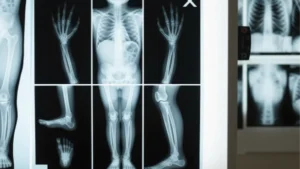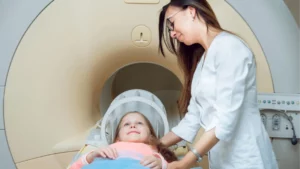In modern medicine, diagnostic and imaging technologies have revolutionized healthcare by providing invaluable insights into the human body’s intricate workings. A center for diagnostic imaging, also known as a diagnostic imaging center, plays a pivotal role in this process. This article delves into the realm of diagnostic imaging services, shedding light on their significance, benefits, and the array of cutting-edge technologies they encompass.
What are diagnostic imaging services?
Diagnostic imaging services encompass a range of non-invasive techniques that enable medical professionals to visualize the internal structures of the body. These techniques aid in the accurate diagnosis, monitoring, and treatment of various medical conditions.
By utilizing advanced technologies, diagnostic imaging centers create detailed images of organs, tissues, bones, and bodily functions, facilitating comprehensive assessments of patients’ health.
Types of Diagnostic Imaging

In the field of medical diagnostics, a range of imaging methods has emerged to provide insights into the human body’s inner workings. These techniques include:
X-Ray
X-ray imaging is one of the most well-known diagnostic techniques. It utilizes low levels of radiation to capture images of the body’s internal structures, making it particularly useful for assessing fractures, lung infections, and dental issues.
MRI (Magnetic Resonance Imaging)
MRI employs powerful magnets and radio waves to generate highly detailed cross-sectional images of the body. This technique is adept at revealing soft tissue structures, making it indispensable for diagnosing neurological disorders, joint injuries, and abdominal conditions.
CT Scan (Computed Tomography)
CT scans combine X-ray and computer technology to create detailed, three-dimensional images. This imaging method is ideal for visualizing complex bone fractures and internal bleeding, as well as evaluating conditions like cancer.
Ultrasound
Using high-frequency sound waves, ultrasound imaging produces real-time images of the body’s internal organs and blood flow. It’s commonly used during pregnancy to monitor fetal development and assess the abdomen, heart, and blood vessels.
Nuclear Medicine Imaging
Nuclear medicine employs small amounts of radioactive material to visualize the body’s physiological processes. This technique is vital for diagnosing conditions like cancer, heart disease, and thyroid disorders.
The Role and Significance of Diagnostic Imaging Services
Diagnostic imaging services play a pivotal role in revolutionizing healthcare practices. These services encompass a spectrum of advanced techniques that allow medical professionals to gain invaluable insights into the human body’s intricate structures and functions.

The importance of diagnostic imaging services cannot be overstated, as they contribute significantly to accurate diagnoses, effective treatment planning, and improved patient outcomes.
Guiding Accurate Diagnoses
Diagnostic imaging services serve as a cornerstone for accurate diagnoses across a wide range of medical conditions. By producing detailed images of internal organs, tissues, and bones, these services enable healthcare providers to identify anomalies, pinpoint abnormalities, and detect the early signs of diseases. This early detection can make a crucial difference in initiating timely interventions and enhancing the chances of successful treatment.
Facilitating Tailored Treatment Strategies
The insights provided by diagnostic imaging services guide medical professionals in formulating precise and tailored treatment strategies. By visualizing the extent of a condition, healthcare providers can select the most appropriate interventions, whether it’s surgery, medication, or other therapeutic approaches. This not only leads to more effective treatments but also minimizes unnecessary procedures, reducing the burden on patients and healthcare systems.
Enhancing Monitoring and Follow-Up
Diagnostic imaging services are equally indispensable for monitoring the progress of ongoing treatments. Through sequential imaging, medical practitioners can assess how a disease or condition is responding to interventions, allowing for timely adjustments if needed. This real-time monitoring ensures that patients receive the best possible care throughout their treatment journey.
Enabling Research and Advancements
Diagnostic imaging services contribute to the advancement of medical research and innovation. The data and insights garnered from these techniques aid researchers in understanding disease mechanisms, developing new treatment modalities, and refining existing medical practices. This continuous cycle of improvement drives the evolution of healthcare and benefits patients globally.
Collaborative Approach to Patient Care
The significance of diagnostic imaging services extends beyond individual medical professionals. These services facilitate a collaborative approach to patient care, where specialists from various disciplines can review and interpret imaging results to collectively make informed decisions. This multidisciplinary collaboration ensures that patients receive comprehensive and well-rounded medical attention.
Empowering Informed Patient Choices
Diagnostic imaging services empower patients by providing visual evidence of their medical conditions. This tangible representation fosters a better understanding of their health status and allows them to actively participate in treatment discussions. Informed patients are better equipped to make choices that align with their preferences and values.
Benefits of Diagnostic Imaging Services
Let’s talk about the remarkable advantages that diagnostic imaging services bring to the table, transforming the way medical professionals diagnose, treat, and manage various health conditions.

Non-Invasive Diagnosis
These services eliminate the need for invasive procedures, reducing patient discomfort and risks associated with surgery.
Early Detection of Diseases
Early diagnosis is pivotal for effective treatment. Diagnostic imaging enables the detection of diseases at their nascent stages, enhancing the chances of successful intervention.
Saves Time
The swift nature of diagnostic imaging expedites the diagnosis process, enabling prompt commencement of treatment strategies.
Reduced Healthcare Costs
Accurate diagnosis from the outset minimizes the need for unnecessary medical procedures, leading to cost savings for both patients and healthcare providers.
Monitoring Treatment Progress
Imaging services facilitate real-time monitoring of the effectiveness of ongoing treatments, allowing for timely adjustments when necessary.
Patient Safety
Non-invasive techniques inherently reduce the risk of infections and complications associated with surgical procedures.
Precision and Accuracy
Detailed imaging leads to more accurate diagnoses, ensuring appropriate treatment plans are formulated.
Increased Patient Confidence
The visual evidence provided by diagnostic imaging fosters patient trust in the medical team’s expertise and recommendations.
Choosing a Reliable Diagnostic Imaging Service
When selecting a diagnostic and imaging center, consider these factors:
- Technology and Equipment: Opt for a diagnostic imaging center that boasts cutting-edge imaging technology to ensure accurate and comprehensive results.
- Qualified Staff: Ensure that the center employs experienced radiologists and technologists to perform and interpret the imaging procedures.
- Accreditation: Look for centers that are accredited by relevant medical authorities, reflecting adherence to high standards of quality and safety.
- Accessibility: Choose a center for diagnostic imaging that is conveniently located and offers flexible scheduling to accommodate patients’ needs.
- Referrals and Reviews: Seek recommendations from healthcare professionals and read patient reviews to gauge the center’s reputation.
One Step Diagnostic takes center stage in diagnostic imaging services, distinguished by its commitment to excellence and patient-centric care. With state-of-the-art technology and a team of skilled professionals, the center offers a comprehensive range of imaging modalities, ensuring accurate and detailed results.
Advancing Healthcare through Diagnostic Imaging Excellence
Diagnostic imaging services are the cornerstone of modern healthcare, revolutionizing medical diagnosis and treatment. From X-rays to advanced MRI and CT scans, these techniques empower medical professionals with the ability to peer into the human body’s intricacies without invasive procedures. By embracing its benefits, diagnostic imaging services exemplify medical progress and enhance patient well-being.
When selecting a diagnostic imaging center, careful consideration of technology, expertise, and reputation ensures the best possible care for patients on their journey to recovery. One Step Diagnostic provides premier diagnostic imaging services. Their cutting-edge technology, skilled team, patient-centered approach, and collaborative ethos underscore how these centers can truly elevate the standard of patient care. Contact them today.




